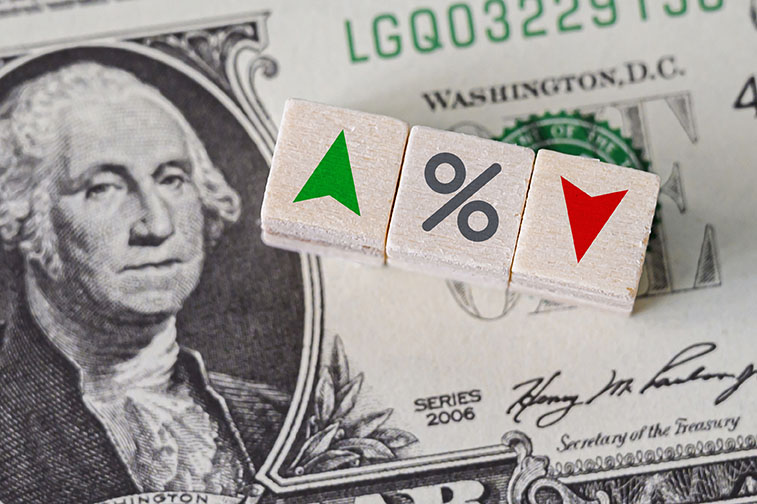
2017 was a challenging year for the credit industry. From the data breach at Equifax and multiple lawsuits that follow, it has been a tumultuous time for consumers to have faith in the world of credit. Unfortunately, it’s becoming apparent that for Americans overall, it’s not going to get any better in 2018 as the trend of acquiring more debt increases.
Aside from having to shell out money for damages caused in 2017, the credit industry will have a very lucrative 2018 even after paying fines and settlements thanks in part to the American consumer.
According to MarketWatch, U.S. households owe more than $1 trillion in credit-card debt, and the numbers are only rising. Your typical culprits of irresponsible spending that contribute to increasing credit card debt among Americans includes more access by those considered ‘subprime borrowers,’ increased costs for food and housing and continuous spending on unnecessary items. As the average household holds a balance of $15,983 on credit. The cost of maintaining a lifestyle beyond their means can cost a lot more than anticipated with interest rates on the rise.
But it’s not just the “keeping up the with Joneses” mentality that is pushing American’s credit limits. When an emergency hits, most consumers do not have the recommended 3-6 months of take home pay in an emergency savings fund. The result is turning to credit cards to finance large unexpected expenses along with daily purchases to weather the storm. It’s a vicious cycle that can push debt levels higher.
If your debt level has outpaced your savings, it may be time you take a serious look at your bigger financial picture. You should be decreasing your debt and increasing your savings over time. The latest Financial Security Index Survey from Bankrate shows the opposite is happening. Surprisingly, 17% of Americans indicated that they have no credit card debt, but also have no savings to show for it! Americans are failing to realize that their savings need to outpace their debt.
It’s also important to have a diverse portfolio of savings to ensure that all your dollars are not in one basket. It is recommended that you have at least three (and ideally, six) months of cash savings for unexpected emergencies. Depending on your age and retirement goals, consulting with your financial planner on your retirement portfolio strategy should be an ongoing conversation. Investing and managing your stock and bond portfolio should also be a discussion in investment, and working with a financial expert on a plan that meets your goals will set you up for success. Debt management is just as much about saving money as it is about paying off your credit. That can only happen when debt is under control or eliminated and you are living your lifestyle within your means.
The good news is, once you get your savings strategy in place, you will be far ahead of the “Jones’s.” It turns out that 48% of Americans have credit card debt that exceeds what they have saved in the bank.
It can be tricky to figure out exactly what to prioritize. Should you stop investing while you pay down your debt? Should you consolidate? What if you start with the highest balance card first?
Our Financial Advisors can not only help you answer these questions, but also help to understand the “big picture” when it comes to getting your finances in order. With interest rates on the rise, with two more hikes coming in 2018, working with a financial planner who knows the marketplace is essential. A “Do-It-Yourself” assessment of your credit can leave some major gaps in your financial future. Our Advisors can look at the details of your finances and asses the best plan to help you get your wealth back on track.
Here are a few facts about credit you need to consider:
- Having your credit score accessed frequently will affect your score. You will lower your score due to multiple inquiries if the inquiries are to obtain credit, not for other reasons such as employment. Avoid accepting every credit offer you’re getting at retail locations for store cards.
- Only paying the minimum payment each month will hurt you in the long term. The higher the balance and the length of time you carry a balance has a negative effect on your financial health and credit score over time.
- Not every credit score that you access online is a true FICO score and may not be the one your lender uses. If you apply for credit, the lender must provide you with a copy of the score they received when they pulled your credit. Don’t be fooled into believing credit cards are the access point to bank lending for home, auto, and other loans.
- Late payments lower your score. Even one a year has a negative result on your ability to secure loans. One of the easiest things you can do to protect your credit is to pay on time, every single month.
- Employment history doesn’t affect credit scores, but some lenders look at employment history to determine if you’re financially stable enough to make monthly payments.
- The more you make and save doesn’t help a credit score. Your bank accounts and investment accounts are not a part of the FICO (debt) calculation. But as we discussed, if you don’t have anything left over at the end of the month because of your debt, you can’t save and invest.
- Bad Credit can take a long time to correct. It takes seven years to remove bankruptcy and collections on credit. Over time it does go away, and your score can improve if you’ve managed your credit positively.
No matter your state of credit, having an investment professional on your side to help navigate your finances is more than peace of mind…it’s essential to your financial wellbeing. Contact us to set up a portfolio review and create a plan for healthy credit management.




